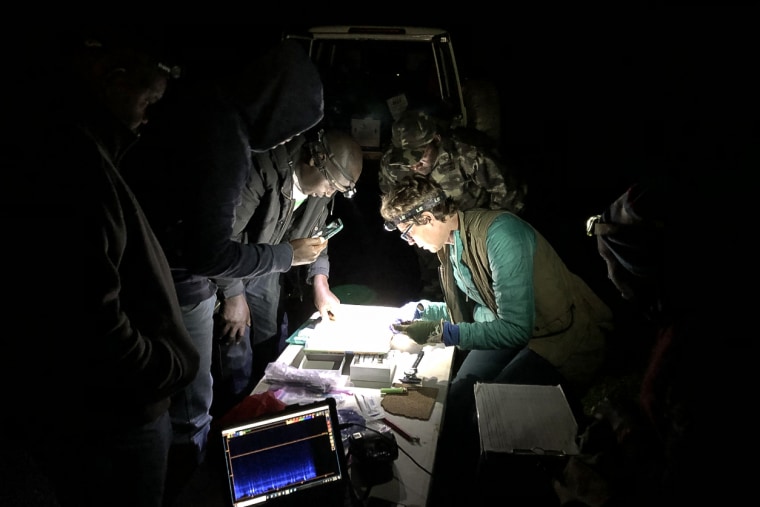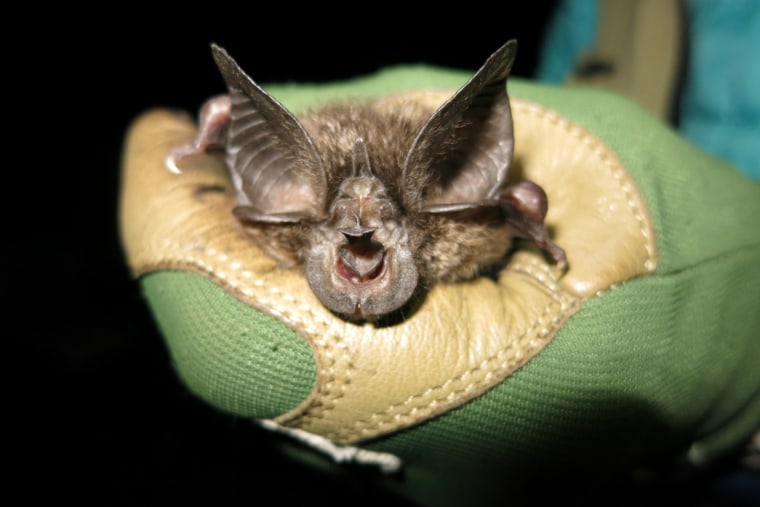A bat with big ears, a horseshoe-shaped nose and a seemingly smushed face hidden behind flaps of skin that was recently discovered in Rwanda is a member of a "lost species" not seen in 40 years, scientists say.
The Hill's horseshoe bat (Rhinolophus hilli) is listed as critically endangered by the International Union for Conservation of Nature. It was not known whether the creatures still existed in the wild, but researchers announced Tuesday that the species has been rediscovered.
"Going into this project we feared the species may have already gone extinct," Jon Flanders, the director of endangered species interventions at Bat Conservation International, said in a statement.
The bat was caught in January 2019 during a 10-day expedition in Rwanda's Nyungwe National Park.
Flanders called it an "incredible" discovery, adding that "it's astonishing to think that we're the first people to see this bat in so long."
Winifred Frick, Bat Conservation International's chief scientist, said a horseshoe bat is easily identifiable by its nose leaf, or the distinctive folds of skin around its nostrils. The lower part of a horseshoe bat's nose leaf is typically U-shaped, like a horseshoe, which is how the creatures got their name. Even still, Frick said, it was clear that they had stumbled on something special.
"We knew immediately that the bat we had captured was unusual and remarkable," she said in a statement. "The facial features were exaggerated to the point of comical."

The scientists took extensive measurements of the bat before it was released again into the wild. The researchers were able to compare the newfound specimen with records in various museum archives in Europe to confirm the species.
Frick and her colleagues also recorded the echolocation calls of the Hill's horseshoe bat, which are the high-frequency pulses of sound bats emit to navigate and hunt for prey.
"Knowing the echolocation calls for this species is a game changer," said one of the team’s lead scientists, Paul Webala, a senior lecturer at Maasai Mara University in Kenya.
The recorded sound waves allowed park rangers in Rwanda to track and "eavesdrop" on the flying mammals in their natural habitat. Over nine months, audio surveys were conducted in 23 spots in the national park, revealing the presence of Hill's horseshoe bats at eight locations confined to a small area, according to Bat Conservation International.
Narrowing the limited range will help researchers with conservation efforts to protect the elusive species, Flanders said. Details about the Hill's horseshoe bat have also been made publicly available through the Global Biodiversity Information Facility to raise awareness about the rare species and other imperiled bats.
"These data belong to anyone and everyone working to ensure these species have protected forests to call home," Frick said in the statement. "Open data sharing ensures we live up to the promise that conservation benefits us all."
The bat's discovery was part of field work that began in 2013 by researchers with the Rwanda Wildlife Conservation Association, the Rwanda Development Board and Bat Conservation International.

